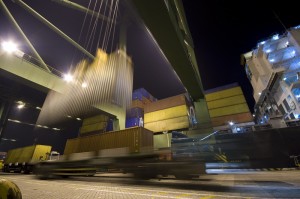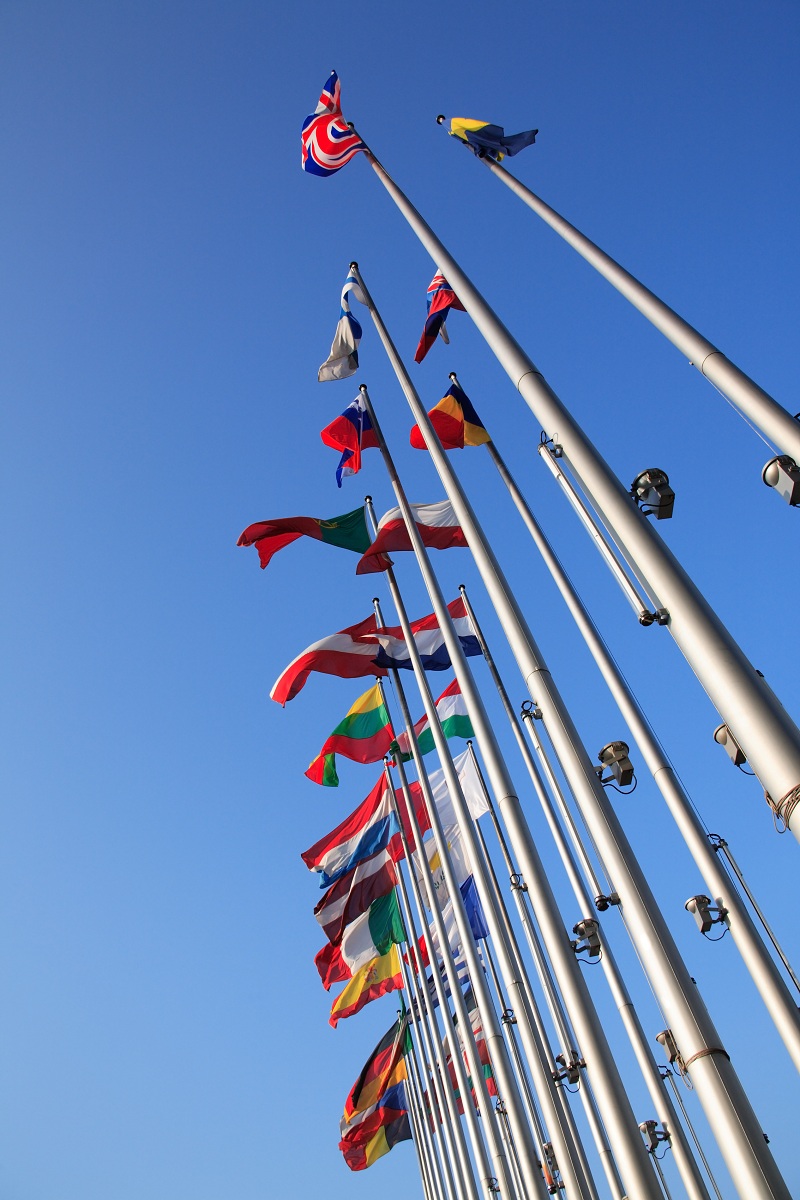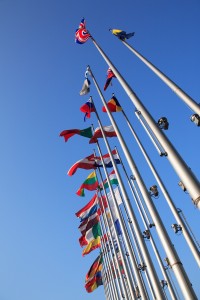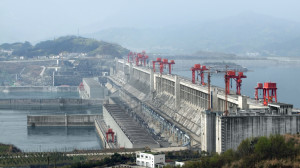China and the European Union: Principles and Pragmatism
Introduction
One of the fundamental difficulties with assessing the relationship between China and the EU is one that is inherent in all analyses of the EU: that it is not a single entity. Constituted of 28 member states (since Croatia joined in 2013) ranging in size from Malta (with fewer than half a million inhabitants) to Germany (home to over 80 million people), the EU is linguistically, economically, culturally, and demographically incredibly diverse. While there has been a much increased pooling of sovereignty within the EU in recent years, each member state retains the right and ability to conduct its own external affairs. However, the EU has worked hard to increase its unity on the international stage. For example, in 2009 the EU appointed a President of the EU Council in order that its external relations are managed more coherently. Even before then, the EU negotiated numerous treaties with key partners in the international arena. These treaties play major roles in the relationships between these international partners and both the EU has a whole, as well as its constituent member states. Additionally, any state wishing to conduct high levels of trade with individual EU member states cannot realistically do so without dealing directly with the EU, alongside its dealings with the states in question. For these reasons, it is valid to speak of the relationship between China and the EU, though with the caveat that the China-EU relationship does not always supersede China’s bilateral dealings with particular EU member states.
Trade
Without question, the single most important factor of the China-EU relationship is trade. The EU, taken as a whole, is China’s largest trading partner accounting for more bilateral trade than even the US or Japan. It is the largest market for China’s exports and has been a significant source of China’s economic growth in the reform era. The importance of the relationship is not just one-sided; China matters to the EU just as much and it is its second largest trading partner after the US, and would be its largest if trade with Hong Kong were to be included in the figures.
As with the China-US relationship, there is tension within this economic success story, particularly in the form of a considerable trade deficit. In 2010, the total value of two-way trade reached its highest point to date at $527 billion, but this resulted in the EU stomaching a deficit of almost $225 billion. Preliminary figures for 2012 show a drop in trade of around 4%, probably driven by Europe’s economic travails, but the overall deficit remains fairly constant. While this represents a significant amount, it also demonstrates that the imbalance in the trading relationship is not as severe as exists in China-US trade; although the figures for absolute deficit are fairly similar (the figure for the US in the same period was equivalent to approximately $236 billion) the EU deficit was generated from a two-way trade figure that was more than one third larger than that of China-US trade, meaning it was proportionately much smaller. It is also important to consider that although this deficit is high, it is relatively stable as both exports and imports continue to grow at a similar pace. Thus, whereas the trade deficit in 2007 was $222 billion, only fractionally lower than it was in 2010, this represented more than half of the overall two-way trade for that year. In fact, across the last five years exports to China from the EU have grown at an average of 15% per year, making China Europe’s fastest growing market by some margin, while imports grew at just below 10%. A continuance of this trajectory will see the trade imbalance become even less of an obstacle to relations in the future.
There is, of course, imbalance within the EU regarding the importance of China as a trading partner. As outlined earlier in this article, while the EU often negotiates as a single entity on the international stage, it is an organisation that has 27 member states, each of which retains its sovereignty. The result of this is that the figures on two-way trade above perhaps give a skewed outlook on the relationship. Of the $527 billion in two-way trade in 2010, fully one third was between Germany and China, and the majority of the trade is with the EU’s four largest states (Germany, UK, Italy and France). When separated out this way and placed into the context of the global economy, the figures are not entirely surprising. It is to be expected that Germany is China’s largest European trading partner, both because of the size of its economy and the level of complementarity, as the majority of trade with Europe is in industry and machinery, sectors in which the German economy is strong. However, the significance of even smaller countries within the EU lies in the collective negotiating position that the EU has, allowing them to be part of a much larger negotiating team in dealings with China; this has the twin effect of increasing these countries’ relative leverage as well as to enhance the EU as a whole vis-à-vis China.
 China has taken on an even greater significance to the EU and its member states since the economic crisis of 2008 and the subsequent debt crises that have emerged in Europe, particularly in those countries that use the Euro. There have been some quite naked attempts from within Europe to woo the Chinese into buying up bonds to ease this situation. China has vested interests in ensuring the stability of the European market on which it relies so heavily for exports, prompting the leadership to issue broad statements of support and pledges to invest in Eurozone debt, especially from Italy, one of the countries most heavily in debt. However, these statements and pledges have also been augmented by warnings from China that Europe must do more to put its own problems right in this area and, most importantly, to protect Chinese investments in the EU. While it is clear that China holds most of the cards in this predicament – the Europeans cannot realistically solve the debt crises without Chinese investment – it is not in China’s own interests to exacerbate the situation and assistance is, therefore, likely to be forthcoming.
China has taken on an even greater significance to the EU and its member states since the economic crisis of 2008 and the subsequent debt crises that have emerged in Europe, particularly in those countries that use the Euro. There have been some quite naked attempts from within Europe to woo the Chinese into buying up bonds to ease this situation. China has vested interests in ensuring the stability of the European market on which it relies so heavily for exports, prompting the leadership to issue broad statements of support and pledges to invest in Eurozone debt, especially from Italy, one of the countries most heavily in debt. However, these statements and pledges have also been augmented by warnings from China that Europe must do more to put its own problems right in this area and, most importantly, to protect Chinese investments in the EU. While it is clear that China holds most of the cards in this predicament – the Europeans cannot realistically solve the debt crises without Chinese investment – it is not in China’s own interests to exacerbate the situation and assistance is, therefore, likely to be forthcoming.
The European Debt Crisis
In order to join the European Union, potential member states had to sign the Maastricht Treaty which was to bind them into limiting their deficit spending and debt levels. Some European Union member states, Italy and Greece for instance, dodged this obligation by hiding their debt and deficit levels through the use of complex currency and credit derivative structures. Having entered the Eurozone, Greece and several other EU countries continued to run large deficits through the 2000s. In the early part of the decade, these deficits were less problematic as they were supported by economic growth. In Greece, this growth was driven by its shipping and tourism industries. With the 2008 financial crisis and the accompanying slowdown of the world economy, however, Greece’s debt, and that of other EU countries, began to rapidly build-up.
As government budget deficits and sovereign debts have increased sharply, a crisis of confidence has emerged which has resulted in Italy, Greece, Spain and Portugal’s credit ratings being downgraded, and in increased borrowing costs for those countries. These sovereign debt issues have become a perceived problem for the Eurozone as a whole, not the least because many of the struggling southern euro countries have received bank loans from France, Germany and other more solvent Eurozone members. France’s banks in particular have extensively lent to southern European governments. In September 2011, two of France’s largest banks, Societe General and Credit Agricole, were downgraded because of their exposure.
 By April 2010, the EU and IMF agreed to an initial bailout package of €45 billion for Greece. In May 2010, austerity measures were proposed to reduce Greece’s deficit, as the country’s slow growth meant that it would be unable to repay its debt without significant cuts in spending. Many Greek citizens were unhappy with the severe austerity measures and have held national strikes in protest. A protest on 5th May 2010, for instance, was widespread and became violent, resulting in three deaths. Nevertheless, in the same month the IMF and the euro zone countries approved a €110 billion loan for Greece, conditional on the implementation of measures to reduce government spending. The Greek loan was followed by a loan of €85 billion for Ireland in November, and a €78 billion rescue package for Portugal in May 2011.
By April 2010, the EU and IMF agreed to an initial bailout package of €45 billion for Greece. In May 2010, austerity measures were proposed to reduce Greece’s deficit, as the country’s slow growth meant that it would be unable to repay its debt without significant cuts in spending. Many Greek citizens were unhappy with the severe austerity measures and have held national strikes in protest. A protest on 5th May 2010, for instance, was widespread and became violent, resulting in three deaths. Nevertheless, in the same month the IMF and the euro zone countries approved a €110 billion loan for Greece, conditional on the implementation of measures to reduce government spending. The Greek loan was followed by a loan of €85 billion for Ireland in November, and a €78 billion rescue package for Portugal in May 2011.
In May 2010, the 27 member states of the European Union agreed to create a €440 million European Financial Stability Facility, a legal instrument designed to maintain financial stability in Europe by being able to provide rapid financial assistance to European governments in need. These funds were to be made available in conjunction with €250 billion from the IMF. In January 2011, the European Union designed the European Financial Stabilization Mechanism, a €60 billion emergency lending program backed by all 27 European Union members. The idea is that EFSF and EFSM are to be replaced by the European Stability Mechanism due to be launched in mid-2013.
In order for Greece to be eligible for the next tranche of its bailout loan, in May 2011, the IMF proposed spending cuts amounting to €28 billion over five years. Greek citizens again took to the streets in protest. In October 2011, leaders of the 17 year zone countries met in Brussels to discuss a package aimed at addressing the crisis. A deal was reached in which it was recommended to write-down by 50% the Greek sovereign debt held by banks, to enlarge the European Financial Stability Facility to €1 trillion, to increase the mandatory level of bank capitalization, to ensure that Italy would make commitments to reduce its national debt, and to pledged €35 billion in credit enhancements to offset losses incurred by European banks. The package has yet to be put into effect, however, as Greek citizen resistance to continued austerity first caused Greek Prime Minister George Papandreou to propose a referendum on the package, then to withdraw the referendum, and eventually, to step down as the Greek Prime Minister. The Greek political situation currently remains unclear with voters apparently unwilling to sanction to agreement to slash public spending on which its bailout money depends.
Currently, the situation remains unresolved. Borrowing costs in Spain, Italy, Portugal, France and Greece have continued to rise up to the point where their debt levels could become unsustainable. In fact, bailouts for Irish and Spanish banks were issued in 2012. Part of the issue has been that the weaker economies of southern Europe have not been able to devalue their currencies in order to remain competitive as they surely would have done if they were single, sovereign entities, while Germany has enjoyed an artificially depressed currency allowing their exports to rapidly grow. Individually, the southern European countries could have more easily preserved their competitiveness through greater tolerance for inflation and corresponding regular devaluations. They would have had the ability to keep interest rates low and to engage in quantitative-easing and fiscal stimulus. They could have supported job-targeting economic policies, instead of introducing inflation- targeting policies as they are required under their current commitments.
This inability to make competitive adjustments through currency variations has created an imbalance of payments in the southern European countries. To correct this imbalance, without the ability to individually raise interest rates or to impose capital controls, the southern European countries have been borrowing to fund their deficits. As their deficits have reached unsustainable levels, they are now being asked to reduce their consumption in order to hike their savings rate and to reduce the capital outflows. This has come at a time when slower GDP growth rates have led to slower growth in tax revenues and higher social security spending, increasing deficits and debt levels further. The French May 2012 election of Francois Holland may mark a shift toward EU economic policies that emphasize growth instead of just austerity; certainly there has been a big upsurge in calls for simulative economic policies. In what form these policies take shape is still under negotiation.
Ultimately, the long-term sustainability of the Eurozone will require a common fiscal policy in addition to a common economic policy. Whether sovereign countries will be willing to let outsiders dictate their tax and government spending policies is yet to be seen. European economies, with high wages, large government social services and subsidies, and complex regulations and taxes are becoming increasingly uncompetitive in the global economy. These factors have been aggravated by Europe’s aging population, the growing use of technology to replace skilled labor, and globalization which has caused European manufacturing and services to relocate to lower-cost production centers.
What China’s role will be in the debt crisis remains to be seen. In the short term, Europe’s debt crisis is likely to be stabilized through financing from the EFSF, the IMF’s use of special drawing rights, or a combination of the two. Exactly how of if China contributes funds to this process is still an open question. Europe is China’s largest export market. If Europe derails, it also will drag down the global economy, which will negatively impact China’s own economic expansion. Although it is not known for certain, it is estimated that a quarter of China’s approximate $3.2 trillion in foreign exchange reserves are denominated in euros, so China has a vested interest in maintaining their value. China continues to need to diversify its foreign reserve holdings and Europe represents one potentially viable area for investing excess Chinese funds; China can only invest so much in its domestic economy without worsening inflation, creating asset bubbles or mal-investing. Playing a more active role in the European crisis might help solidify China’s positioning as a responsible power and enhance its clout on the global stage. It may also boost Beijing’s leverage with Brussels on issues such as gaining “market economy” status, increasing its role in international organizations such as the IMF and the World Bank, and on getting the US to stop pressuring it to ease its foreign currency controls.
That said, it is likely that bailing-out Europe would prove unpopular at home. On a per capita basis, China is much poorer than Europe; bailing-out Europe would give the impression that China is supporting rich foreigners at the expense of its citizens, especially given the widespread sentiment in China that Europe is in crisis in the first place because of its own profligate spending. The safety of EFSF issued bonds is also a concern for China. On numerous occasions, China has insisted that it cannot consider investing until Europe’s financial house is in order. Also, as China rises, disquiet in the West about China’s intentions intensifies. Depending on how China handles it, its efforts at assistance could be misconstrued as opportunistic mercantilism, especially if it invests in industries that it could later use as a springboard for further market penetration, as opposed restricting its investment to buying bonds.
Human Rights
The EU describes its core interests in the relationship with China as going beyond trade to incorporate matters of human rights and political reform. The way in which the EU seeks to alter China’s actions in this area is governed, as the rest of the relationship is, by the 1985 EC-China Trade and Cooperation Agreement (TCA). Although originally negotiated by a European Community that consisted of just 9 states, the TCA has since been updated and remains the bedrock of EU-China relations today. Under the terms of the TCA, the EU commits itself to engagement with China, particularly with regard to trade, in order that it may encourage the liberalization of China both politically and economically. The EU’s China policy, therefore, rests on a fundamental assumption that engagement is good and will encourage liberalization in China.
As part of the agreement the two sides hold regular summits on specific issues, including a biennial “Human Rights Dialogue” during which representatives of the EU offer assessments on the extent to which China has fulfilled previous human rights commitments and has the opportunity to raise individual cases of concern with their Chinese counterparts. This process is not entirely one-sided; the Chinese side frequently uses these meetings to point out what it considers to be issue of discrimination against people of Chinese origin within the EU, though the evidence produced for this is ordinarily quite unconvincing. The Europeans point to some limited successes from these dialogues, particularly in the release of political prisoners, such as Tibetan activists, ostensibly at the request of EU representatives. However, examination of the reports of these dialogues released by the EU shows that frequently the same cases are repeatedly raised, usually without any concrete action resulting. On the occasions where cases have been resolved there is little evidence that this has happened as a direct result of EU concern. However, it can be argued that a success of the EU’s approach is that it has institutionalized China’s acceptance of the discourse on human rights, allowing regular reporting to take place on its record in this area by an external party. Critics may see this as paying lip service to the idea, but others argue that this is just one stage in a long-term process of norm development.
The gulf in perceptions of human rights between Europe and China came to the fore in the run up to the 2008 Olympics in Beijing. Following the series of protests that occurred in Tibetan regions of China in March of that year, and the concomitant crackdown by Chinese authorities, many groups in Europe sought to register their anger and protest by targeting the Olympic torch relay as it passed through Europe. The reaction was strongest in France, where several protestors tried to grab, or even extinguish, the flame, while numerous pro-Tibet banners and flags lined the route. These scenes were mirrored in other EU countries, including the UK, and caused serious disquiet amongst both Chinese politicians and the general public, many of whom considered it to be an undeserved sleight on the Chinese nation. What followed was a period of particularly frosty relations, especially between France and China. A fairly widespread internet campaign, for example, urged the boycott of Carrefour, a French supermarket chain that has almost 200 stores in mainland China. After much speculation that he would boycott the opening ceremony of the games, the French president Nicolas Sarkozy appeared to back down and made public his intention to be present. This calmed the atmosphere at the political level, and the controversy now appears to have had no serious lasting impact on either Franco-Chinese or EU-China relations.
Arms Embargo
The biggest and longest running issue in China-EU relations, however, remains an arms embargo that was put into force in 1989 following the Tiananmen Incident. The embargo was the centerpiece of the European response to the crackdown which had been widely condemned among Western countries. It remains the only sanction imposed during that time not to have been lifted. What it means in practice is that no EU member state may sell weaponry to the PRC and this includes a responsibility to ensure that no third country acts as an intermediary. During a period of rapid modernization in the Chinese military, this has been a source of concern both to the Chinese government, who would like the freedom to purchase advanced military technology from EU suppliers, and also to some in the defense industry in Europe, which considers China to be a massive untapped market. It is an item that is on virtually every agenda at summits between the EU and China, but there is currently no realistic prospect of it being lifted. A groundswell of opinion did begin to form around lifting the embargo in the early years of the twenty-first century, with the then French president, Jacques Chirac, chief among those calling for at least a limited amount of arms sales to be permitted. While some countries supported this idea, it was opposed strongly by the US, a crucial ally of the EU. In direct response to US concerns BAE Systems, a British firm which is the largest manufacturer of arms in the EU, stated publicly that it would not countenance selling weapons to China even if the embargo were lifted. The debate came to an end in 2005 when China passed its Anti-Secession law, explicitly authorizing the use of force to regain sovereignty over Taiwan. Following this, even the most pro-Chinese European leaders realized that ending the embargo was a political impossibility. The question of lifting the embargo continues to be raised within Europe from time to time, most recently by the Spanish in 2010, but the prospects of it being lifted seem distant and unlikely. This is a continuing cause of irritation in China, where it is viewed, probably correctly, as more of a strategic decision than a statement on its human rights record.
Future Trends
All relationships that involve the EU are complicated by the fact that it is both a single entity and a diverse collection of 28 sovereign states. The diversity of the EU brings with it an incoherence in its strategy towards China. While all states value the increased and increasing levels of two-way trade and understand the centrality of China to future European economic growth, other aspects of the relationship are not dealt with in such a unified manner. The trajectory of economic expansion seems set to continue and the growth of exports to China within this expansion mean that any tensions that are caused as a result of the trade deficit will not be of great significance to the relationship. While the EU continues to define the issues of human rights and political liberalization as core to its China strategy, it could be argued that it is now taking a much more pragmatic approach in this respect. The policy of engaging with China in order to promote these aims rests on the fundamental principle that such engagement will help to bring about the desired changes in China, but this is not really borne out by the evidence. It seems unlikely that the EU will make serious inroads into its human rights and political reform agenda in China and, for their part, the Chinese seem willing to engage discursively in this process while continuing to place economic growth at the center of their strategy. With the core interests of both sides seemingly converging around trade, the issue of human rights seems likely to take more of a back seat. The exception to this will continue to be the arms embargo which is likely to remain in place for the foreseeable future, though this has now taken on more of a strategic importance, both to states within the EU as well as to key allies such as the US, rather than genuinely seeking to address issues of liberty in China.
In terms of the Eurozone debt crisis, it is hard to predict future outcomes given the incredible volatility of the current situation. Given all that China has at stake in Europe, it is unlikely that it will remain categorically on the sidelines. Given a choice, China has expressed a preference to buy European assets as opposed to government bonds, although it anticipates that Europeans may likely be more resistant to this idea. In such a case, it is likely that China will be more willing to provide funds for Europe through the IMF, especially if it’s increased funding buys it a greater voice in IMF policy making. Gaining greater clout in international organizations is a Chinese objective. Additionally, supporting the IMF will be easier to sell at home than investing in a strictly European-based financing mechanism. The IMF’s authority and experience at restructuring countries struggling with their finances will also provide China with additional comfort that its investments will not be squandered.









